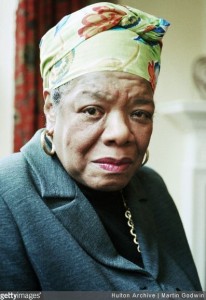 The second definition provides a visual for what many think a divorce “looks like.” While the end of a marriage is emotionally tumultuous and devastating, the actual legal process of uncoupling does not have to be. But, it is critical that you choose a process that promotes healing. The Collaborative Process does just that.
Collaboration is a holistic approach to divorce. It can be utilized by couples who are ending either a marriage or significant relationship, or who have a child or children together. Although some people question whether it is an appropriate process when domestic abuse or mental health/chemical dependency issues are present, many others think it can (and should) at least be attempted. If you don’t want to be another “divorce horror story,” the Collaborative Process will likely be a great fit.
Collaboration focuses on the future (i.e., the relationship of co-parenting in two homes) rather than the past (i.e. the vilification of one spouse); is a win-win for both partners (rather than a court-imposed win-lose); and emphasizes the well-being of the entire family. You don’t air your dirty laundry in court, and you aren’t (literally) judged. In fact, you never set foot in a courtroom. The negotiation model is interest-based/win-win, rather than positional/win-lose. You pay attorneys to help you solve problems, not argue and keep you stuck in the past. Every family is unique, so every family deserves a unique solution. And if you have young children, please keep in mind they need you present and available. You can’t be present when you are fighting the other parent in court. In Part 3, we will discuss the various professionals in the Collaborative Process and how their expertise can help you avoid the divortex.
The second definition provides a visual for what many think a divorce “looks like.” While the end of a marriage is emotionally tumultuous and devastating, the actual legal process of uncoupling does not have to be. But, it is critical that you choose a process that promotes healing. The Collaborative Process does just that.
Collaboration is a holistic approach to divorce. It can be utilized by couples who are ending either a marriage or significant relationship, or who have a child or children together. Although some people question whether it is an appropriate process when domestic abuse or mental health/chemical dependency issues are present, many others think it can (and should) at least be attempted. If you don’t want to be another “divorce horror story,” the Collaborative Process will likely be a great fit.
Collaboration focuses on the future (i.e., the relationship of co-parenting in two homes) rather than the past (i.e. the vilification of one spouse); is a win-win for both partners (rather than a court-imposed win-lose); and emphasizes the well-being of the entire family. You don’t air your dirty laundry in court, and you aren’t (literally) judged. In fact, you never set foot in a courtroom. The negotiation model is interest-based/win-win, rather than positional/win-lose. You pay attorneys to help you solve problems, not argue and keep you stuck in the past. Every family is unique, so every family deserves a unique solution. And if you have young children, please keep in mind they need you present and available. You can’t be present when you are fighting the other parent in court. In Part 3, we will discuss the various professionals in the Collaborative Process and how their expertise can help you avoid the divortex.
In Part 1, vortex was defined as:
1) a whirling mass of water or air that sucks everything near it towards its center;
2) a place or situation regarded as drawing into its center all that it surrounds, and hence, being inescapable or destructible. The second definition provides a visual for what many think a divorce “looks like.” While the end of a marriage is emotionally tumultuous and devastating, the actual legal process of uncoupling does not have to be. But, it is critical that you choose a process that promotes healing. The Collaborative Process does just that.
Collaboration is a holistic approach to divorce. It can be utilized by couples who are ending either a marriage or significant relationship, or who have a child or children together. Although some people question whether it is an appropriate process when domestic abuse or mental health/chemical dependency issues are present, many others think it can (and should) at least be attempted. If you don’t want to be another “divorce horror story,” the Collaborative Process will likely be a great fit.
Collaboration focuses on the future (i.e., the relationship of co-parenting in two homes) rather than the past (i.e. the vilification of one spouse); is a win-win for both partners (rather than a court-imposed win-lose); and emphasizes the well-being of the entire family. You don’t air your dirty laundry in court, and you aren’t (literally) judged. In fact, you never set foot in a courtroom. The negotiation model is interest-based/win-win, rather than positional/win-lose. You pay attorneys to help you solve problems, not argue and keep you stuck in the past. Every family is unique, so every family deserves a unique solution. And if you have young children, please keep in mind they need you present and available. You can’t be present when you are fighting the other parent in court. In Part 3, we will discuss the various professionals in the Collaborative Process and how their expertise can help you avoid the divortex.
The second definition provides a visual for what many think a divorce “looks like.” While the end of a marriage is emotionally tumultuous and devastating, the actual legal process of uncoupling does not have to be. But, it is critical that you choose a process that promotes healing. The Collaborative Process does just that.
Collaboration is a holistic approach to divorce. It can be utilized by couples who are ending either a marriage or significant relationship, or who have a child or children together. Although some people question whether it is an appropriate process when domestic abuse or mental health/chemical dependency issues are present, many others think it can (and should) at least be attempted. If you don’t want to be another “divorce horror story,” the Collaborative Process will likely be a great fit.
Collaboration focuses on the future (i.e., the relationship of co-parenting in two homes) rather than the past (i.e. the vilification of one spouse); is a win-win for both partners (rather than a court-imposed win-lose); and emphasizes the well-being of the entire family. You don’t air your dirty laundry in court, and you aren’t (literally) judged. In fact, you never set foot in a courtroom. The negotiation model is interest-based/win-win, rather than positional/win-lose. You pay attorneys to help you solve problems, not argue and keep you stuck in the past. Every family is unique, so every family deserves a unique solution. And if you have young children, please keep in mind they need you present and available. You can’t be present when you are fighting the other parent in court. In Part 3, we will discuss the various professionals in the Collaborative Process and how their expertise can help you avoid the divortex.
 The second definition provides a visual for what many think a divorce “looks like.” While the end of a marriage is emotionally tumultuous and devastating, the actual legal process of uncoupling does not have to be. But, it is critical that you choose a process that promotes healing. The Collaborative Process does just that.
Collaboration is a holistic approach to divorce. It can be utilized by couples who are ending either a marriage or significant relationship, or who have a child or children together. Although some people question whether it is an appropriate process when domestic abuse or mental health/chemical dependency issues are present, many others think it can (and should) at least be attempted. If you don’t want to be another “divorce horror story,” the Collaborative Process will likely be a great fit.
Collaboration focuses on the future (i.e., the relationship of co-parenting in two homes) rather than the past (i.e. the vilification of one spouse); is a win-win for both partners (rather than a court-imposed win-lose); and emphasizes the well-being of the entire family. You don’t air your dirty laundry in court, and you aren’t (literally) judged. In fact, you never set foot in a courtroom. The negotiation model is interest-based/win-win, rather than positional/win-lose. You pay attorneys to help you solve problems, not argue and keep you stuck in the past. Every family is unique, so every family deserves a unique solution. And if you have young children, please keep in mind they need you present and available. You can’t be present when you are fighting the other parent in court. In Part 3, we will discuss the various professionals in the Collaborative Process and how their expertise can help you avoid the divortex.
The second definition provides a visual for what many think a divorce “looks like.” While the end of a marriage is emotionally tumultuous and devastating, the actual legal process of uncoupling does not have to be. But, it is critical that you choose a process that promotes healing. The Collaborative Process does just that.
Collaboration is a holistic approach to divorce. It can be utilized by couples who are ending either a marriage or significant relationship, or who have a child or children together. Although some people question whether it is an appropriate process when domestic abuse or mental health/chemical dependency issues are present, many others think it can (and should) at least be attempted. If you don’t want to be another “divorce horror story,” the Collaborative Process will likely be a great fit.
Collaboration focuses on the future (i.e., the relationship of co-parenting in two homes) rather than the past (i.e. the vilification of one spouse); is a win-win for both partners (rather than a court-imposed win-lose); and emphasizes the well-being of the entire family. You don’t air your dirty laundry in court, and you aren’t (literally) judged. In fact, you never set foot in a courtroom. The negotiation model is interest-based/win-win, rather than positional/win-lose. You pay attorneys to help you solve problems, not argue and keep you stuck in the past. Every family is unique, so every family deserves a unique solution. And if you have young children, please keep in mind they need you present and available. You can’t be present when you are fighting the other parent in court. In Part 3, we will discuss the various professionals in the Collaborative Process and how their expertise can help you avoid the divortex. 








 While researching for this post, I came across a number of divorce-related blogs. The blog medium provides an efficient and concise opportunity to share information and educate the public. This blog focuses on the
While researching for this post, I came across a number of divorce-related blogs. The blog medium provides an efficient and concise opportunity to share information and educate the public. This blog focuses on the 